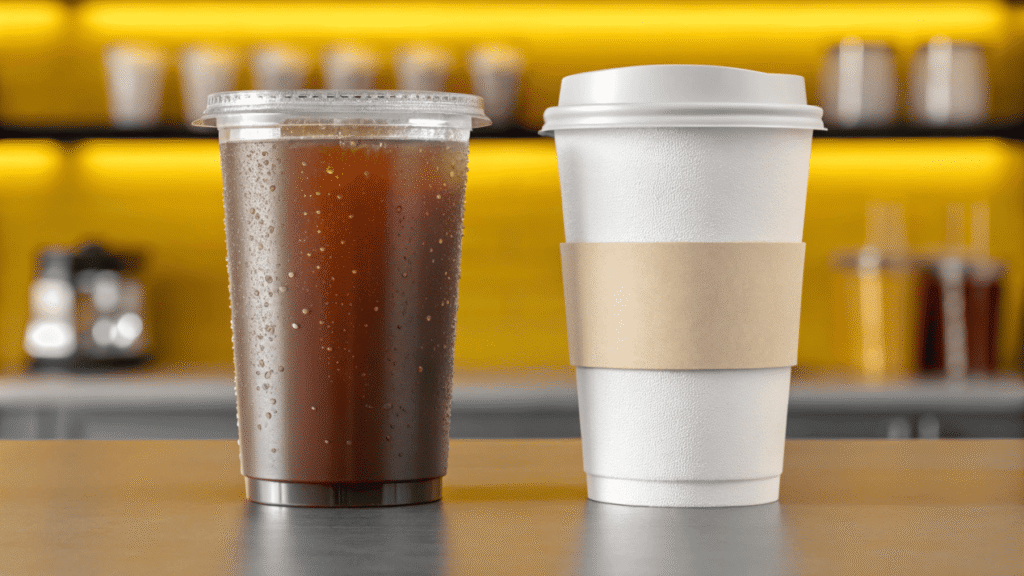Choosing between plastic and paper cups is confusing. Make the wrong decision, and you could hurt your budget, your brand image, and even the environment more than you think.
For cold drinks, clear plastic cups are often better for their durability and visual appeal. For hot drinks and a more eco-conscious brand image, paper cups are the standard. The "best" choice truly depends on your specific needs.
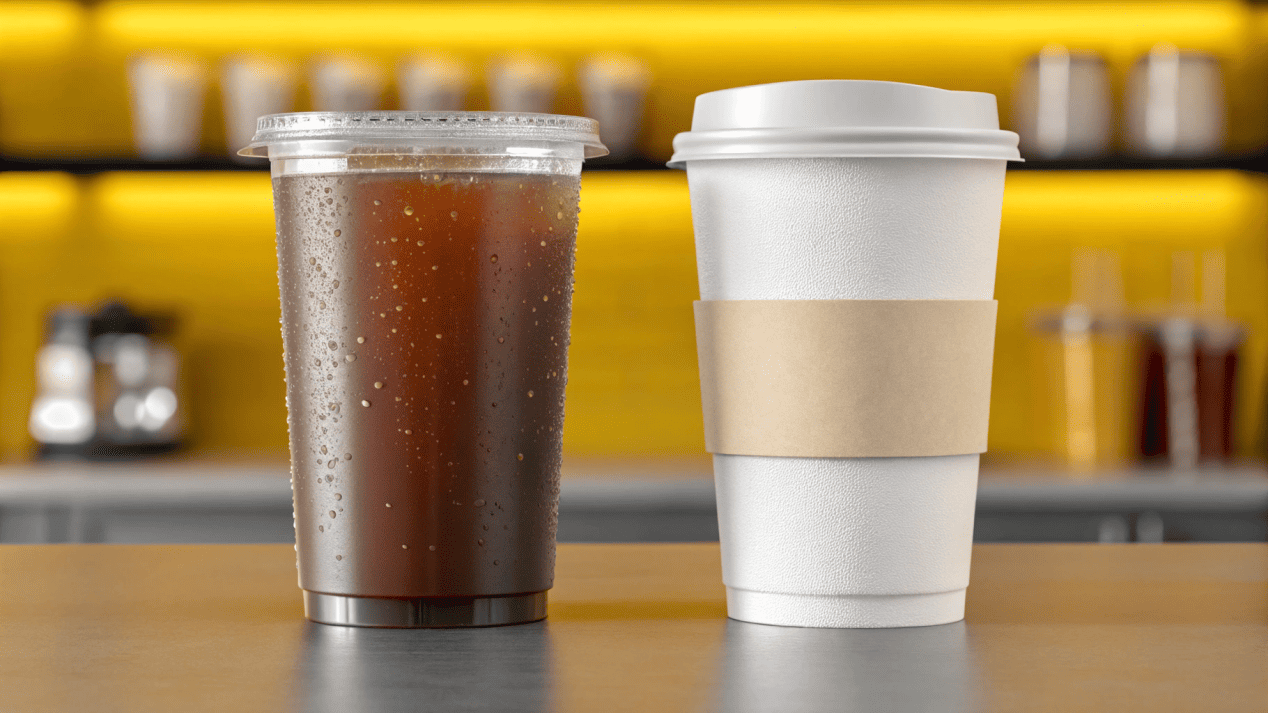
I once had a client, the owner of a new smoothie bar, who insisted on using paper cups because he thought they were "greener." But his customers couldn't see the vibrant colors of his drinks, and sometimes the cups got soft from condensation before they even left the store. We had to have a serious talk about perception versus reality. The best cup isn't just about a single factor; it's about finding the right balance for your product, your customers, and your bottom line.
Does Your Drink Dictate the Cup You Should Use?
You serve a beautiful iced latte, but it's hidden inside an opaque paper cup. It doesn't look appealing, and condensation can make the cup feel weak and unpleasant to hold.
Yes, absolutely. Use clear plastic cups for cold drinks to showcase the product and ensure durability. Use insulated paper cups for hot drinks to protect hands and maintain temperature.
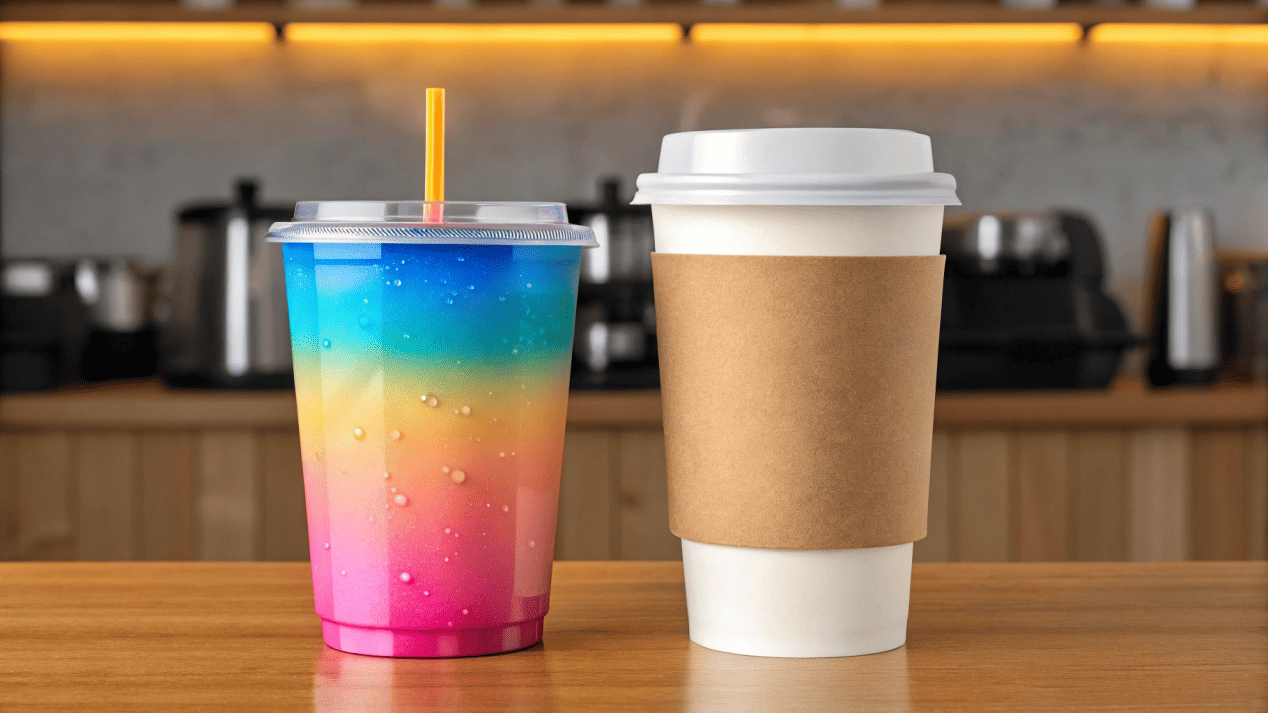
As an engineer, I think of this in terms of material properties and fitness for purpose. You wouldn't build a boat out of paper for a reason. The same logic applies here. The cup is a functional part of the product delivery system, and you have to match the material to the task.
The Case for Plastic: Clarity and Strength
For cold beverages like iced coffee, smoothies, sodas, and juices, plastic is mechanically superior.
- Visual Appeal: Clear PET (Polyethylene terephthalate) plastic is like a crystal-clear window for your product. It showcases the colors and layers, which is a powerful marketing tool.
- Durability: Plastic is shatterproof and far more rigid than paper when dealing with condensation. It's the safer and more reliable choice for busy environments like festivals, outdoor events, or poolside service.
- Limitation: Most common plastics like PET cannot handle hot liquids; they will warp and can become unsafe.
The Case for Paper: Insulation and Versatility
For hot beverages like coffee and tea, paper is the undisputed industry standard.
- Insulation: Paper cups are designed to be poor conductors of heat, protecting customers' hands. Double-wall paper cups provide even better insulation.
- Versatility: While they excel with hot drinks, paper cups work perfectly well for cold drinks too. This allows a cafe to simplify its inventory by using one type of cup for everything, even if it's not visually ideal for cold items.
| Beverage Type | Recommended Cup | Key Reason |
|---|---|---|
| Hot Coffee, Tea | Paper Cup | Insulation, Safety |
| Iced Coffee, Soda | Plastic Cup (PET) | Clarity, Durability |
| Smoothies, Juices | Plastic Cup (PET) | Clarity, Marketing Appeal |
| Water Cooler | Either | Versatility, Cost |
Which Cup Is Truly Better for the Environment?
You want to make an eco-friendly choice, but the information is conflicting. You might be choosing the cup you think is green, but is actually worse based on your local reality.
Neither is clearly better; both have major environmental flaws. Recyclable plastic is only good if your local system actually recycles it. Paper cups are rarely recyclable in standard facilities due to their plastic lining.
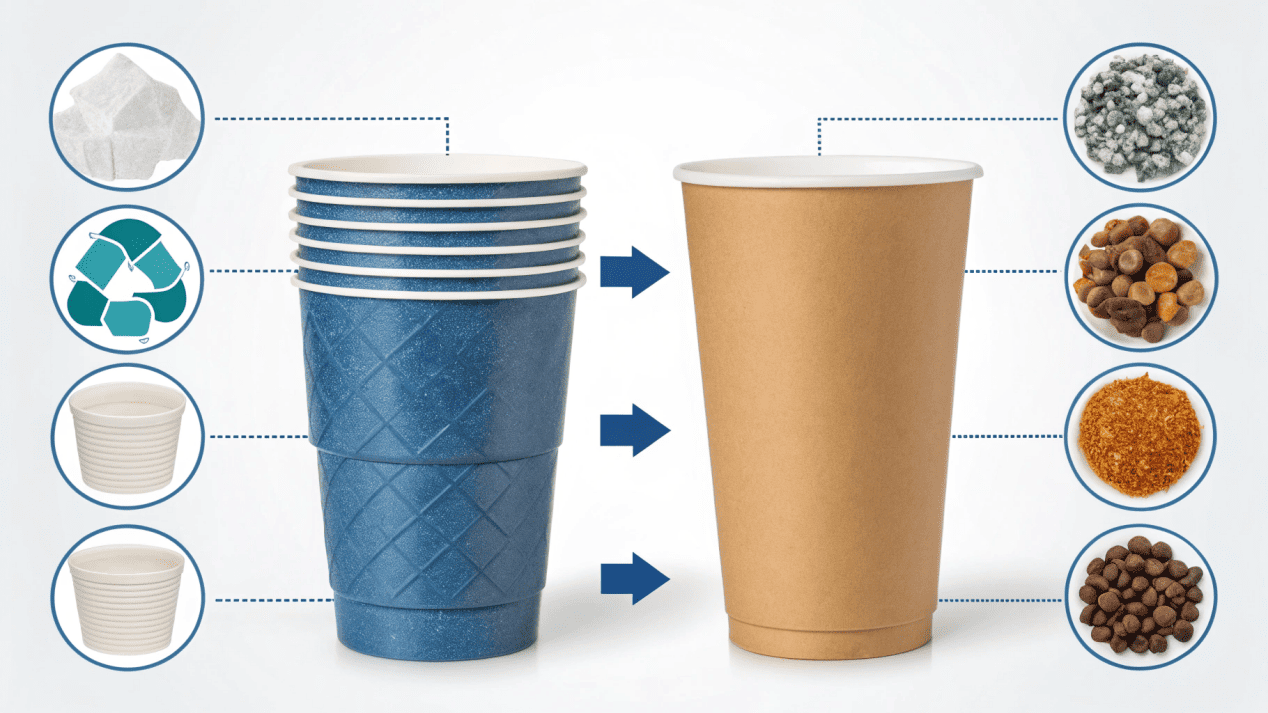
This is the hardest question I get from clients. The honest answer is that the "greener" choice almost entirely depends on the waste management infrastructure where your business operates. There is no universally correct answer.
The Environmental Problem with Plastic
- Raw Materials: Most plastics are made from petroleum, a non-renewable fossil fuel. The extraction and manufacturing process has a significant carbon footprint.
- End of Life: While plastics like PET (#1) and PP (#5) are highly recyclable in theory, global recycling rates are very low. If they end up in a landfill or the ocean, they persist for hundreds of years, breaking down into harmful microplastics.
The Environmental Problem with Paper
- Raw Materials: Paper comes from trees, a renewable resource. However, turning trees into paper is a very water- and energy-intensive process. It's crucial to source from responsibly managed forests (look for FSC certification).
- End of Life: This is the big issue. To hold liquid, paper cups are lined with a thin layer of plastic (polyethylene or PLA). This mixed material cannot be recycled in most standard paper recycling facilities. PLA-lined cups are compostable, but only in industrial composting facilities, which are rare. In a landfill, they can produce methane, a potent greenhouse gas.
The single most important step you can take is to call your local waste management provider and ask them directly: "Can you process plastic #1 cups?" and "Do you have a facility that can separate the plastic lining from paper cups?" Their answer determines your best choice.
Which Cup Will Have a Bigger Impact on Your Budget?
You're running a business and every cent counts. The cost of disposables is a significant operational expense, and the price difference between cup types can add up fast.
From a purely financial standpoint, standard plastic cups are generally the more cost-effective option per unit. Paper cups are often more expensive due to their complex manufacturing process.
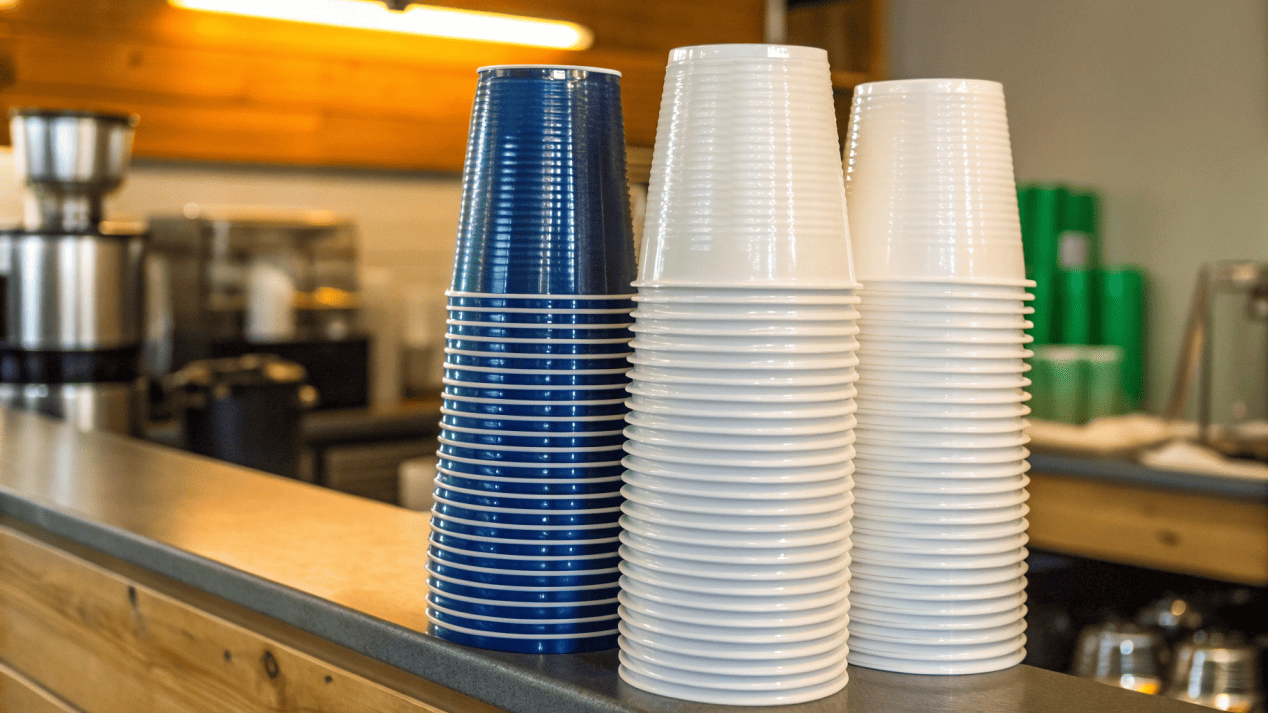
When I help clients with sourcing, cost is always a primary driver. The price difference isn't arbitrary; it reflects the complexity and efficiency of the manufacturing process for each material.
Why Plastic is Often Cheaper
The manufacturing of plastic cups, through processes like thermoforming or injection molding, is incredibly efficient and can be done at a very high speed with minimal waste. The raw material, while based on fluctuating oil prices, is processed on a massive global scale, which keeps costs down.
Why Paper is More Expensive
Creating a paper cup is a multi-step process. First, the paperboard must be made. Then, it needs to be coated with polyethylene. After that, the paper is printed, cut into blanks, and then fed into a machine that forms the cup body, seals the side seam, attaches the bottom, and rolls the rim. Each step adds time and cost. Furthermore, specialized options like double-wall or PLA-lined cups carry an even higher price premium. If your business uses thousands of cups a day, the difference of one or two cents per cup can translate into thousands of dollars a year.
What Do Your Customers Actually Want to Hold?
Your cup is a walking advertisement for your brand. Using a cup that feels cheap or doesn't align with your brand's values can send the wrong message to your customers.
Customers often perceive paper as a more eco-friendly and premium choice, especially for hot coffee. However, for cold drinks, they functionally prefer the sturdiness and clarity of a plastic cup.
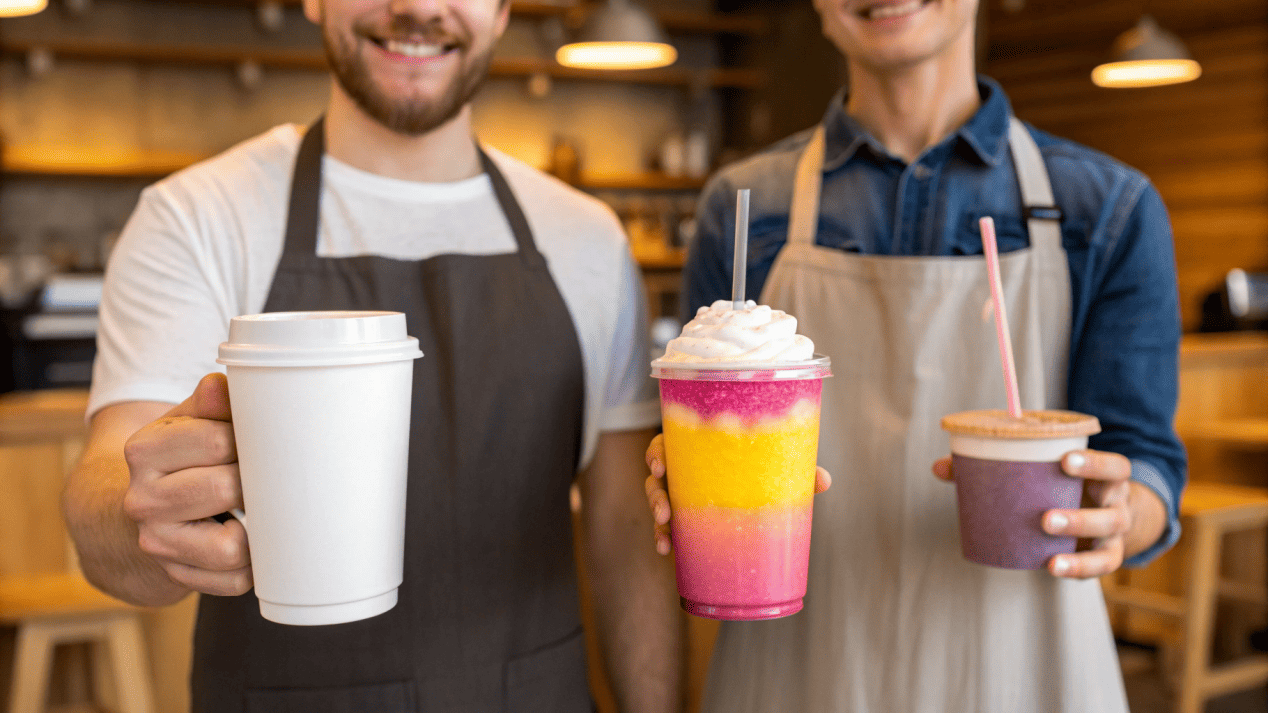
Public perception is powerful. In recent years, there has been a huge backlash against single-use plastics due to images of ocean pollution. This has created a strong "halo effect" for paper, even if the environmental reality is more complicated.
The Perception of Paper: The "Natural" Choice
For a coffee shop, the feel of a paper cup is the accepted norm. It feels warm, natural, and when branded well, it looks premium. Many customers associate paper with being more responsible. If your brand identity is built around being sustainable, organic, or high-end, using a paper cup is almost non-negotiable for aligning with those values, especially for hot drinks.
The Function of Plastic: The "Better" Experience
Despite the negative press, customers know that a plastic cup works better for certain drinks. No one wants to drink a thick, layered smoothie from an opaque cup where they can't see the contents. They appreciate the sturdiness that doesn't get soggy and the leak-proof nature of a well-made plastic cup and lid. In this context, the function often outweighs the environmental perception for the customer in the moment. The key is to understand what your customer prioritizes for the specific product they are buying from you.
Conclusion
The best cup is not a single material, but the one that fits your drink, budget, brand, and, most importantly, your local recycling and disposal capabilities.
